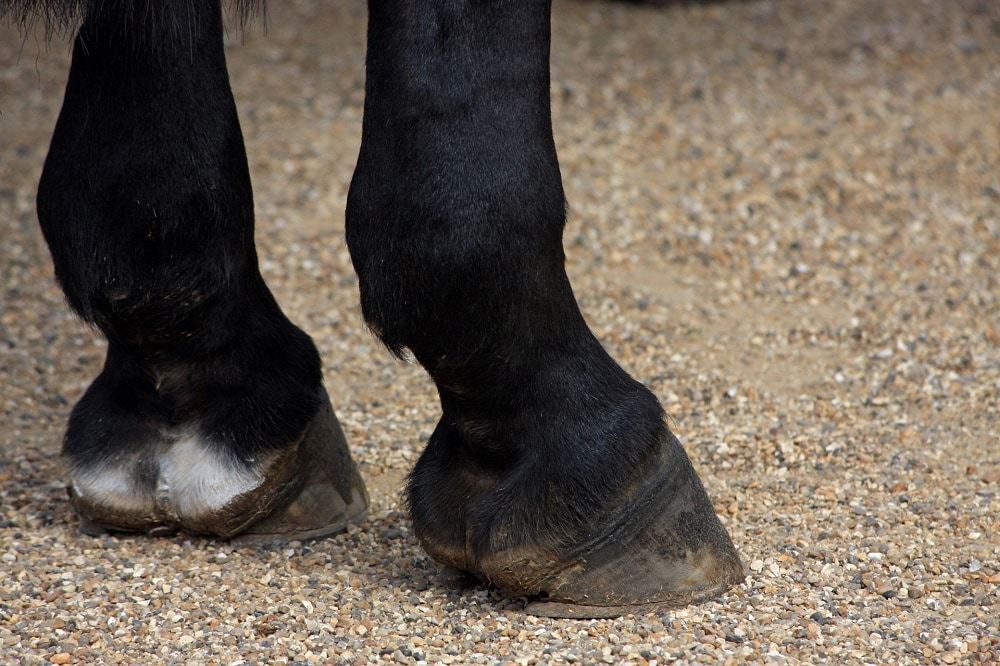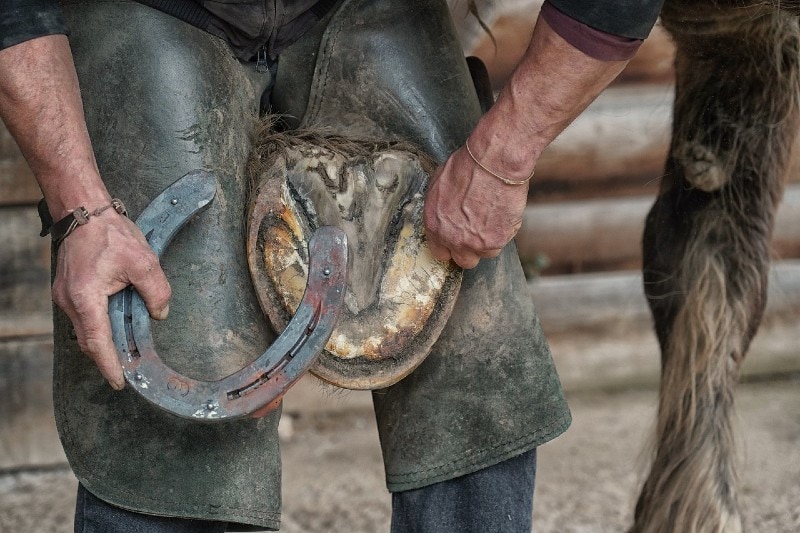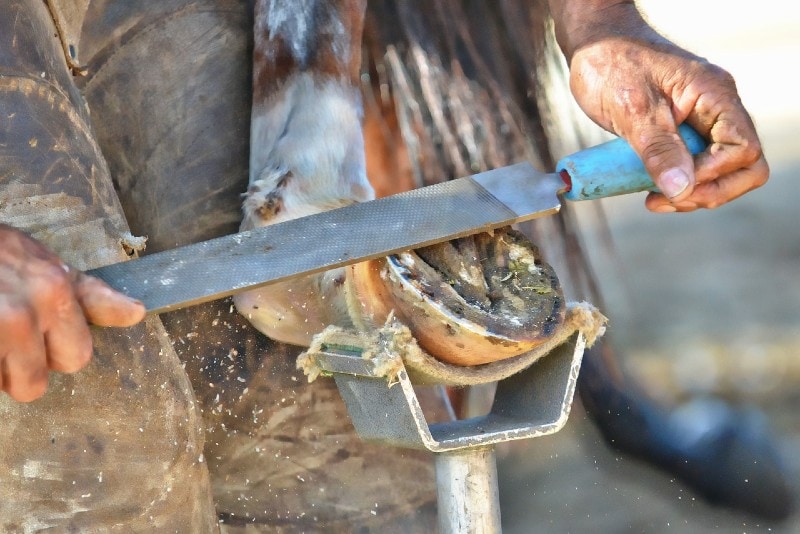
Do horses have feeling in their hooves? The answer is a little complicated, as it ultimately boils down to which part of the horse’s anatomy you are considering when you think about the hooves.
Most likely, you are thinking about the outer structure of the hoof. That outer structure does not have nerve endings, and horses cannot feel anything in that part of the hoof. However, there are other parts of the hoof that have nerve endings. To learn more about horses’ hooves, keep reading below.

Anatomy of a Horse’s Hoof

The horse’s hoof comprises three central regions: the outer structures, the bottom of the hoof, and the internal structures.
The Outer Structures
The outer structures are what most people commonly associate with the horse’s hoof. These structures include the hoof wall, which is the tough outer layer that surrounds the more delicate internal structures.
Not only does the hoof wall offer protection, but it also absorbs shock. It is made of keratin and grows on its own, meaning it needs to be trimmed repeatedly. It also contains no blood vessels or nerve endings. When you trim your fingernails, you typically do not experience pain. It’s similar for horses and their outer hooves.
Beneath the Hoof
On the underside of the hoof, there is a structure called the sole. It is built from the same keratinous material as the hoof wall; however, this keratin is more easily degraded than the hoof wall.
There is another structure called the frog that is filled with sensitive nerve endings, so in that sense, a horse can feel sensations in their hooves. However, this structure is toward the heel of your horse’s foot rather than the toes, where horseshoes would be placed.
The Inner Structure
The inner structures include cartilaginous cushions, bones, and tendons. Horses have feeling here, but again, they are not a part of the hoof horseshoes would be attached to. These structures are inside of the horse’s foot.

Do Horseshoes Hurt Horses?
The answer is no; attaching a horseshoe to a horse’s hoof does not cause pain. The nails are inserted into the part of the hoof that is most like your fingernails, so the horse does not feel anything. The only instance in which attaching a horseshoe might harm a horse is if the nail is placed incorrectly, and that has nothing to do with the horseshoe itself but with the improper procedure.
Why Are Horseshoes Important?

The purpose of the horseshoe is to minimize the wear and tear of the hoof wall. Without it, a horse’s hooves would deteriorate over time. When it comes to icy weather conditions, horseshoes can provide traction and stability. They can also be used for therapeutic reasons, like how humans might wear metal braces to recover from injuries.
Pros and Cons of Horseshoes
There are pros and cons to everything, and horseshoes are no exception. The pros of horseshoes, in addition to what was mentioned above, include the following:
While horseshoes are very important, that does not mean there aren’t drawbacks. However, the only significant disadvantages of horseshoes are the deterioration of the hoof and an altered walking pattern.
Can Horses Feel Their Hooves Being Trimmed?

The hoof wall is part of a horse’s hoof that needs trimming. Since the structure has no nerve endings, horses cannot feel pain when their hooves are trimmed.
On the contrary, evidence suggests that trimming a horse’s hooves makes them feel better. According to one study, horses with recently trimmed hooves are more willing to be active. And when they are not active, they are more relaxed than their non-trimmed counterparts.
These findings suggest that trimming a horse’s hooves gives them a sense of relief. So, rather than hurting a horse, trimming the hooves is likely to rejuvenate them.

Conclusion
Horses are majestic creatures that are always on their feet. Since they spend so much time on their hooves, their hooves must be well-maintained. Attaching horseshoes and hoof-trimming are ideal ways to keep a horse’s hooves in good shape, and since they don’t bring them any pain, they can benefit everyone involved.
Featured Image Credit: GoranH, Pixabay
